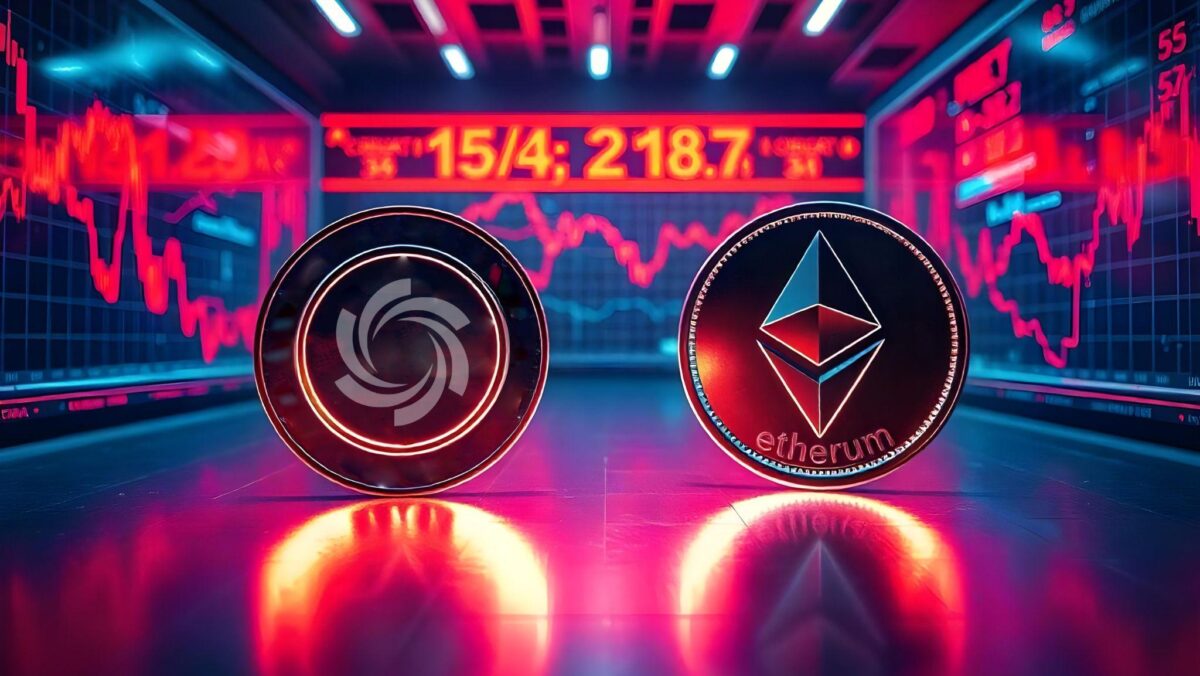Two vastly different players are catching investor attention—Ethereum (ETH), the smart contract pioneer, and Ozak AI (OZ), a high-potential AI crypto currently in presale. While Ethereum has established itself as the go-to Layer 1 platform powering DeFi and NFTs, Ozak AI is positioning itself at the forefront of artificial intelligence and decentralized data analytics. So, which of these has the stronger upside heading into the next bull run?
Ethereum: The Smart Contract Project
Ethereum is the second-biggest cryptocurrency by market cap and keeps to guide in software-driven adoption. From decentralized finance protocols to NFT systems and Web3 applications, Ethereum serves as the inspiration. With Ethereum’s shift to Proof-of-Stake thru “The Merge” and upcoming scalability improvements via Layer 2s and sharding, its infrastructure is becoming stronger and user-friendly.

Currently trading around $2,500, Ethereum has pulled back from it’s all-time high of nearly $4,900. While analysts count on Ethereum should smash the $10,000 mark in the next bull cycle—particularly if institutional adoption hastens—that might constitute more or less a 4x advantage from today’s rate stages. Impressive, however not unheard of in the altcoin space.
Ozak AI: The AI-Powered Project
Ozak AI, on the other hand, is a new player merging AI with blockchain in a rapidly evolving niche. Built to deliver real-time predictions and analytics through AI models, Ozak AI integrates technologies such as the Ozak Stream Network (OSN), DePIN (Decentralized Physical Infrastructure Networks), Ozak Data Vaults, and customizable Prediction Agents. These components allow businesses and individuals to make smarter decisions using on-chain and off-chain data—essentially acting as an AI-powered brain for blockchain analytics.
The project is currently in its 4th Ozak AI presale stage at a token price of just $0.005, having already raised over $1.2 million. With its utility-driven approach and AI at the core, Ozak AI presents a compelling narrative. If it reaches its speculative $1 target in 2025, it would represent a 200x return from current levels—a far cry from Ethereum’s expected 3x–4x.

Ethereum and Ozak AI serve different functions. Ethereum powers decentralized applications and programmable money, while Ozak AI aims to redefine how data is processed and interpreted on the blockchain. As global attention shifts towards artificial intelligence, projects like Ozak AI could benefit from both crypto and AI market booms, essentially riding two waves at once.
Ozak AI doesn’t compete directly with Ethereum but may end up complementing or even integrating with ecosystems like it. Still, from a growth potential perspective, early-stage AI tokens tend to outperform mature Layer 1s during bull runs.
Ethereum remains a reliable investment with massive adoption and steady growth. It’s a foundational piece of crypto infrastructure and is likely to benefit from any broad market upswing. Ozak AI, however, represents a higher-risk, higher-reward opportunity with massive upside thanks to its presale pricing and AI-focused innovation. For conservative investors, Ethereum is the safer bet. But for those chasing 100x or 200x gains in 2025, Ozak AI might just be the wild card that pays off.
About Ozak AI
Ozak AI is a blockchain-based crypto task that provides an innovative platform that focuses on predictive AI and advanced data analytics for financial markets. Through machine learning algorithms and decentralized community technologies, Ozak AI enables real-time, accurate, and actionable insights to help crypto lovers and corporations make the perfect choices.
For more, visit:
Website: https://ozak.ai/
Telegram: https://t.me/OzakAGI
Twitter : https://x.com/ozakagi
Disclaimer: This media platform provides the content of this article on an "as-is" basis, without any warranties or representations of any kind, express or implied. We assume no responsibility for any inaccuracies, errors, or omissions. We do not assume any responsibility or liability for the accuracy, content, images, videos, licenses, completeness, legality, or reliability of the information presented herein. Any concerns, complaints, or copyright issues related to this article should be directed to the content provider mentioned above.






